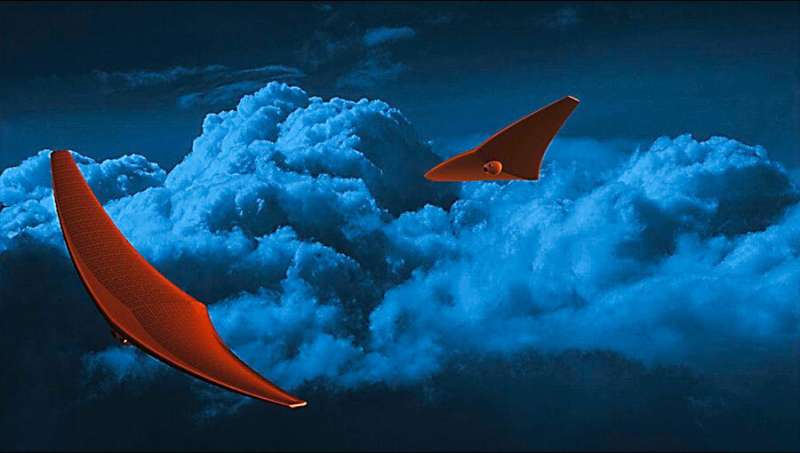Stingray-inspired spacecraft aims to explore dark side of Venus

Venus is Earth's neighbor, yet scientists' understanding of the planet is relatively limited, especially on the so-called "dark side."
That knowledge gap may eventually be filled because University at Buffalo researchers are designing a unique spacecraft for NASA that might explore the planet like no previous probe.
The Bio-inspired Ray for Extreme Environments and Zonal Explorations (BREEZE) project is one of 12 revolutionary concepts selected by NASA for its Innovative Advanced Concepts (NAIC) program, which funds early-stage technologies that could change what's possible in space. (Six other projects chosen in previous years received additional funding.)
Proposed by the university's Crashworthiness for Aerospace Structures and Hybrids (CRASH) Laboratory, researchers envision a morphing spacecraft with wings that flap like a stingray's pectoral fins. The design could make efficient use of high winds in the planet's upper atmosphere while providing scientists unparalleled control of the vehicle.
BREEZE would circumnavigate Venus every four to six days. Solar panels—charging every two to three days on the side of planet illuminated by the sun—would power instruments that take atmospheric samples, track weather patterns, monitor volcanic activity and gather other data.
"By taking our cues from nature, specifically sea rays, we're looking to maximize flight efficiency. The design will allow for a so-far unattained degree of control for such a spacecraft that would be subject to severe zonal and meridional winds on the planet," says the project's lead investigator, Javid Bayandor, Ph.D., associate professor of mechanical and aerospace engineering in UB's School of Engineering and Applied Sciences.
Bayandor, director of CRASH Lab, says the spacecraft's distinct versatility would allow it to collect data on the mysterious dark side of Venus.
This part of the planet has puzzled scientists for years because of its sustained periods of darkness. For example, it takes Venus longer to rotate on its axis (243 days) than it does to orbit the sun (225 days)—making a day longer than a year. That means large portions of the planet are shrouded in darkness and considerably different than the sunny side.
BREEZE's stingray-like morphing wings would result from an internal tensioning system that would provide the ability to achieve thrust, control, stability, additional lift and mechanical compression required for active buoyancy control.
These are important features, Bayandor says, because of the planet's inhospitable conditions, which include surface temperatures nearing 900 degrees Fahrenheit and thick clouds of sulfuric acid.
The technology behind the spacecraft could potentially be used to explore other parts of the solar system such as Titan, a moon of Saturn, as well as underwater environments on Earth, he says.
This is the second award Bayandor and his CRASH lab have received from the NIAC program. The team in 2016 received an award to develop a deployable heat shield and tensegrity robotic module for high-risk landings of spacecraft and subsequent explortation in extreme environments.
"Becoming a NIAC Fellow isn't easy, and Javid has won two NIAC Phase I awards. His Bio-inspired Ray for Extreme Environments and Zonal Exploration study is the first NIAC award to a State University of New York institution. Javid is a creative, innovative researcher leading a group of talented students, and I'm excited to see the developments of this study," says NIAC Program Executive Jason Derleth.
Provided by University at Buffalo





















